-
The integration of Artificial Intelligence (AI) into the field of interior design marks a significant and transformative shift, heralding a new era in home aesthetics. Far from being just another fleeting trend, AI's incorporation is fundamentally revolutionizing the way spaces are conceptualized, designed, and experienced. It's equipping designers with the tools to offer personalized, innovative, and sustainable solutions that align perfectly with the dynamic and evolving needs of homeowners. As we peer into the future, it becomes evident that AI is set to play a crucial role in shaping interiors that are not merely visually appealing but are also imbued with intelligence and adaptability.
-
AI is redefining the art of interior design by enabling the creation of spaces that can learn from and adapt to the preferences and behaviors of their occupants. This means homes that adjust lighting, temperature, and even furniture arrangements autonomously to enhance comfort and efficiency. Additionally, AI-driven platforms are making it possible to visualize design changes in real-time through advanced 3D modeling, allowing for a collaborative and iterative design process that can anticipate and incorporate future trends and technologies. This not only enhances the aesthetic appeal of spaces but also ensures that they are sustainable and future-proof.
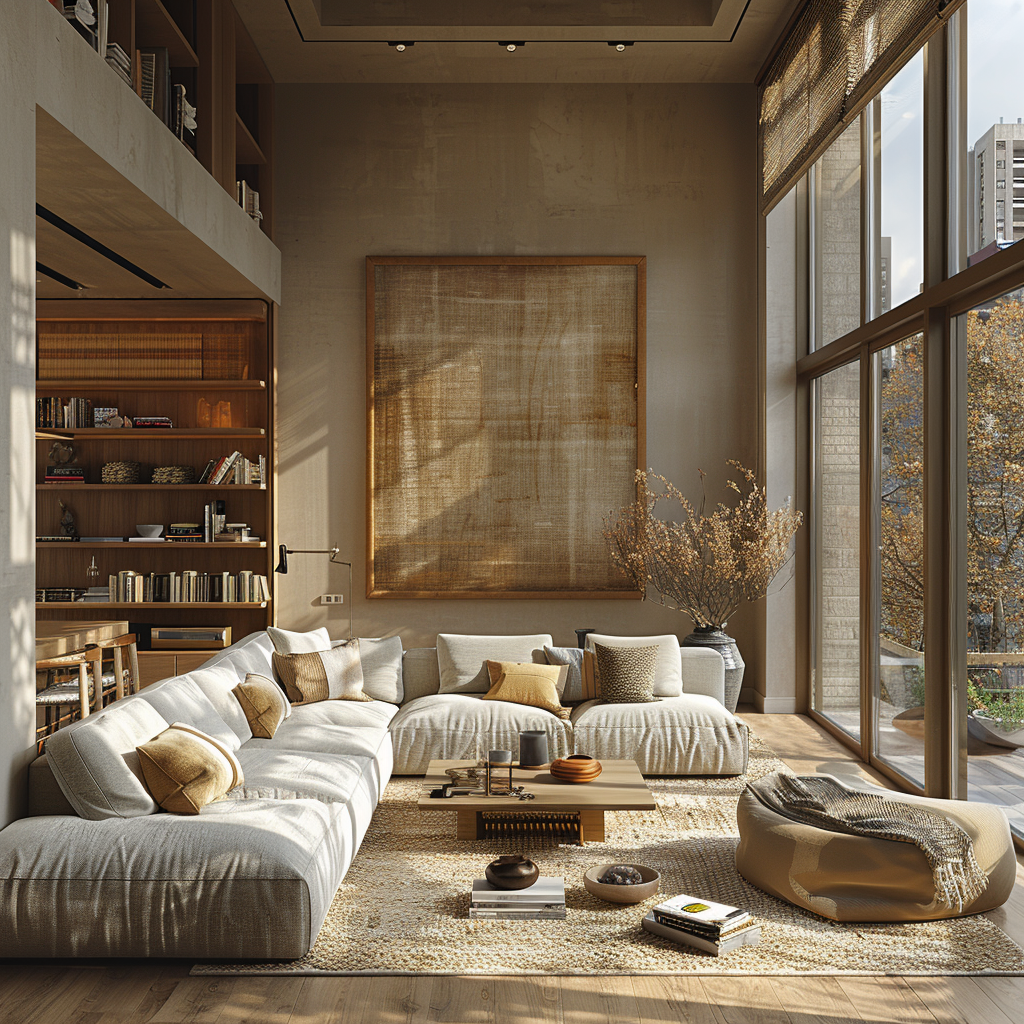
-
Moreover, AI's capability to analyze large datasets on lifestyle patterns, environmental sustainability, and material durability is facilitating the selection of eco-friendly materials and smart appliances that contribute to the creation of green, energy-efficient homes. This integration of AI into interior design is not just about automating processes but about crafting spaces that reflect the unique identity of the inhabitants while being mindful of their impact on the planet.
-
As AI continues to evolve, its potential to innovate within interior design grows exponentially. The future it promises is one where homes are more responsive, adaptive, and personalized than ever before, blending aesthetics with functionality in ways we are just beginning to imagine. For designers and homeowners alike, this future looks incredibly promising, with AI leading the charge towards reimagining the possibilities of home aesthetics in the 21st century.
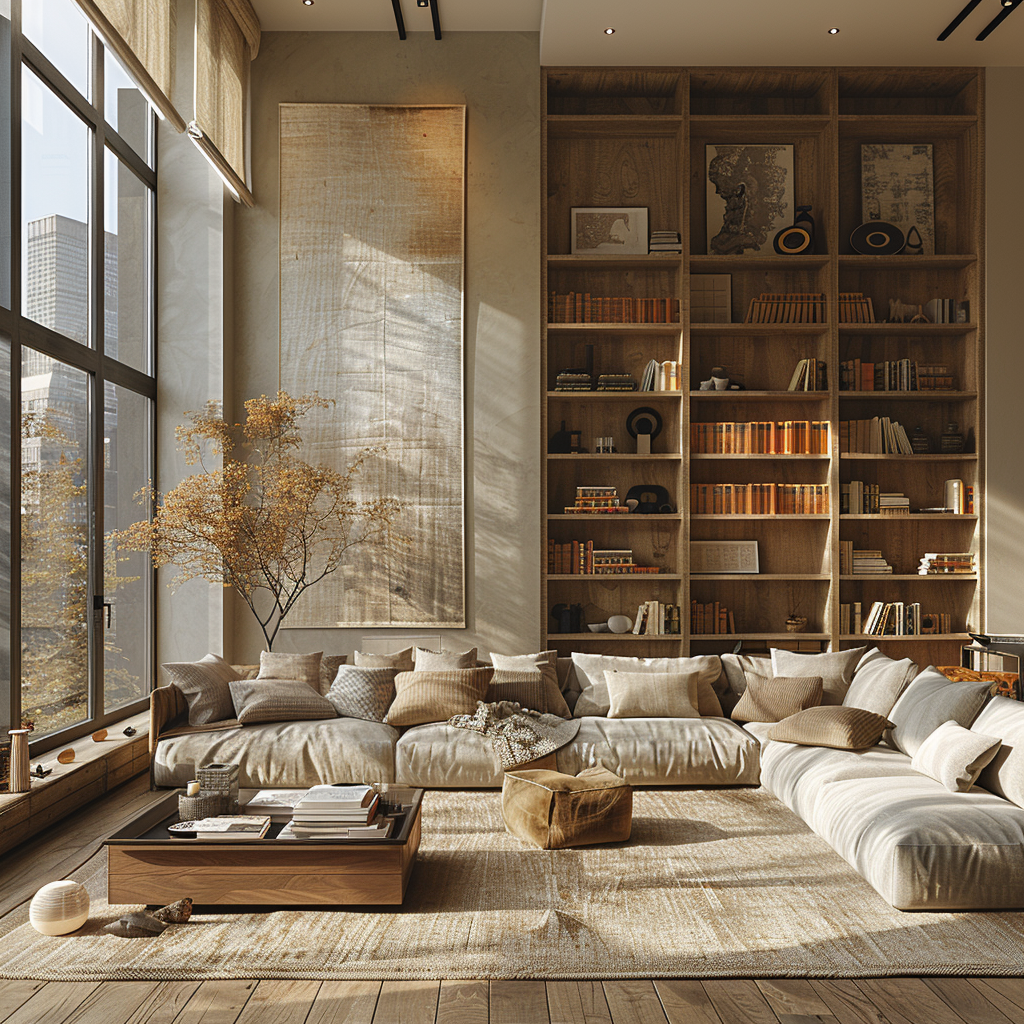
Personalization at Its Core
-
AI's integration into interior design has heralded a new age of personalization, transforming spaces into deeply individualized reflections of one's personality, lifestyle, and evolving preferences. With its unparalleled capacity to process and analyze vast datasets in real time, AI enables designers to gain profound insights into the unique tastes and requirements of each client. This goes beyond mere aesthetic preferences, delving into how spaces can be optimized for the client's way of life, anticipating future needs, and seamlessly adapting to changes over time.
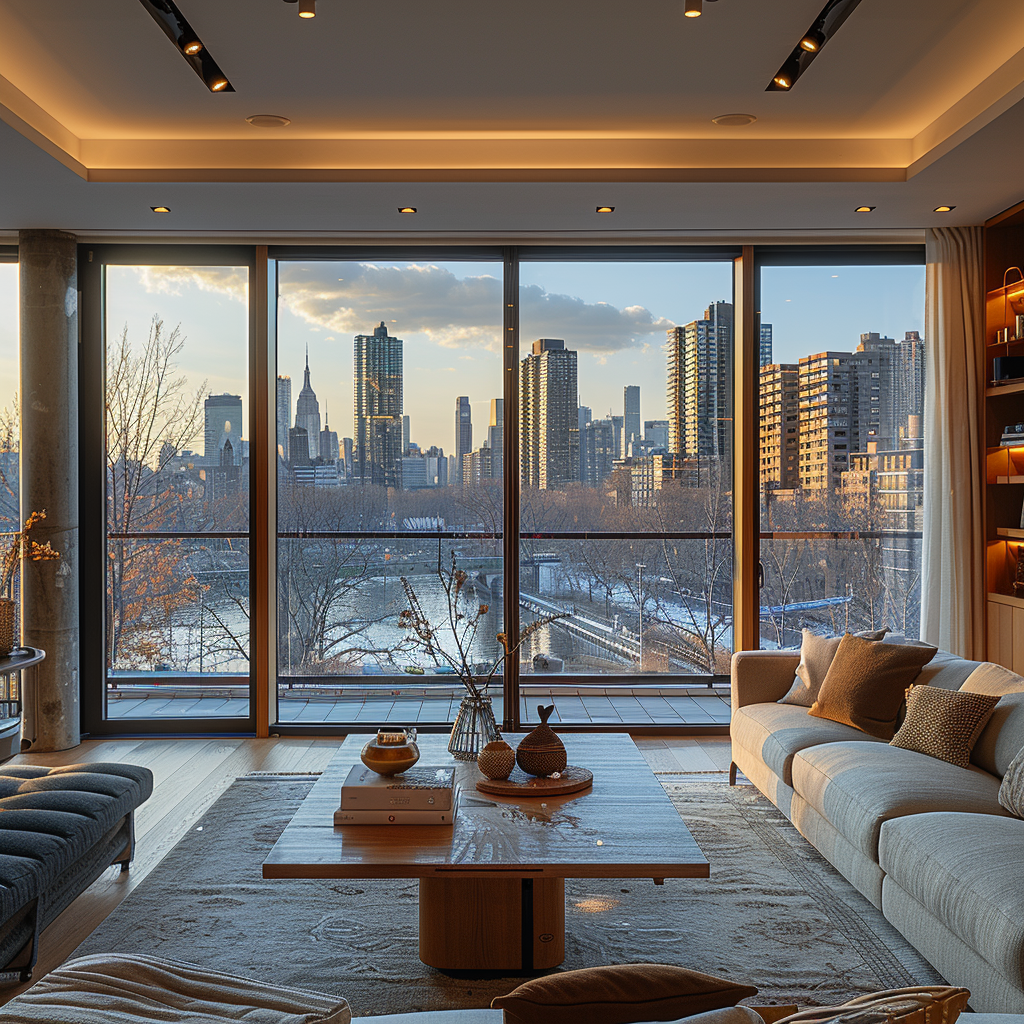
-
This level of personalization means that interior spaces are no longer static environments but dynamic settings that can evolve. Picture a living space that adjusts its layout, lighting, and even ambiance to match your mood, activities, or the time of day, creating an environment that is not just a backdrop to your life but an active participant in it. AI algorithms can suggest design modifications that anticipate and adapt to life milestones, such as the arrival of a new family member, ensuring that the home always meets the occupants' needs.
-
Moreover, this approach allows for a collaborative relationship between the designer and the homeowner, where feedback loops facilitated by AI can refine and perfect the design over time. It's a move towards creating spaces that are not just personalized on the surface but are intricately tailored to support and enhance the daily lives of those who inhabit them.
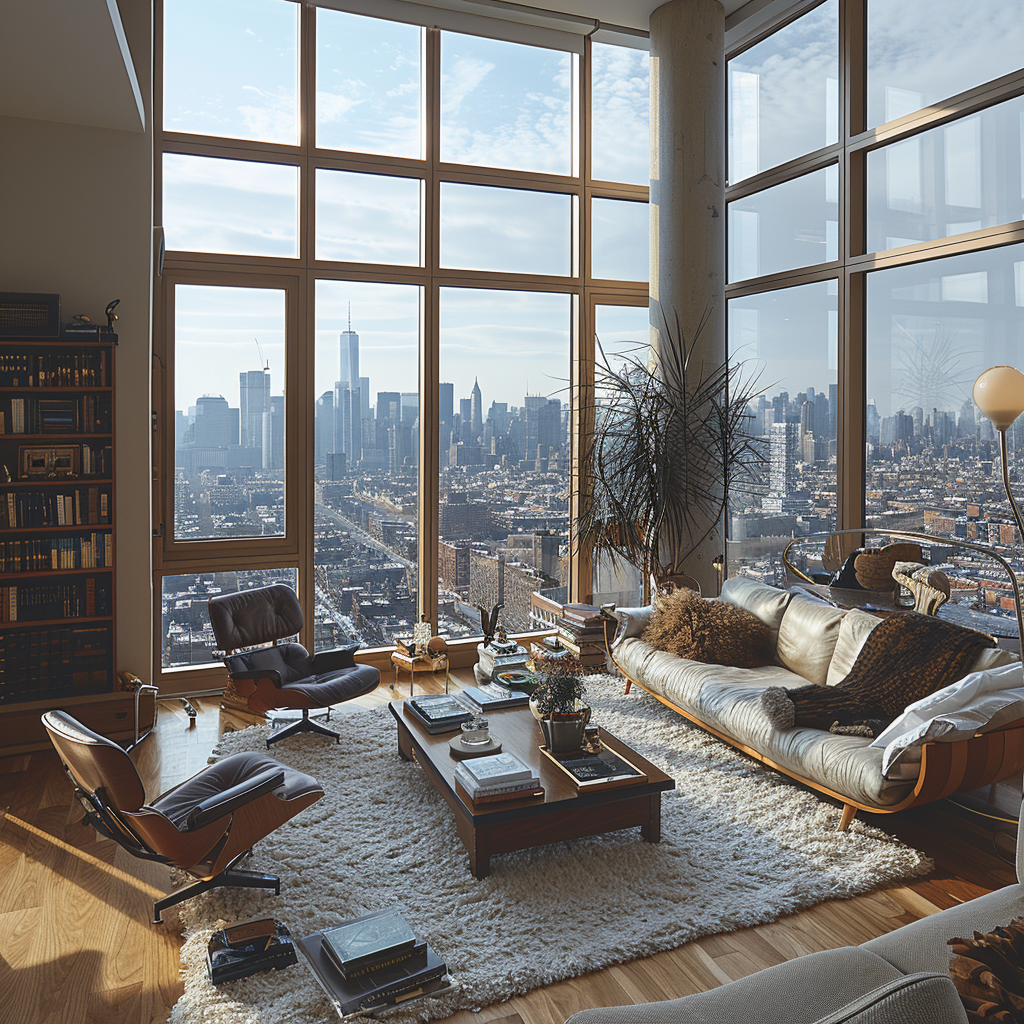
-
In essence, AI is setting the stage for a future where interior design transcends traditional boundaries, offering not just customization but a deep personalization that reflects and adapts to the intricate tapestry of individual lives. It's a promising horizon where our living environments become ever more aligned with our identities, preferences, and journeys, thanks to the insightful application of AI.
Enhanced Visualization and Virtual Experimentation
- The integration of Artificial Intelligence (AI) into the realm of interior design has revolutionized the way professionals and clients approach the visualization and experimentation of living spaces. With the advent of AI-driven tools and applications, the industry has moved beyond the traditional confines of blueprints and sketches into the dynamic and immersive world of 3D rendering and virtual reality (VR) experiences. This technological leap enables designers and clients to not only visualize but also virtually walk through their designed spaces, offering a tangible sense of the environment before any physical modifications are made.
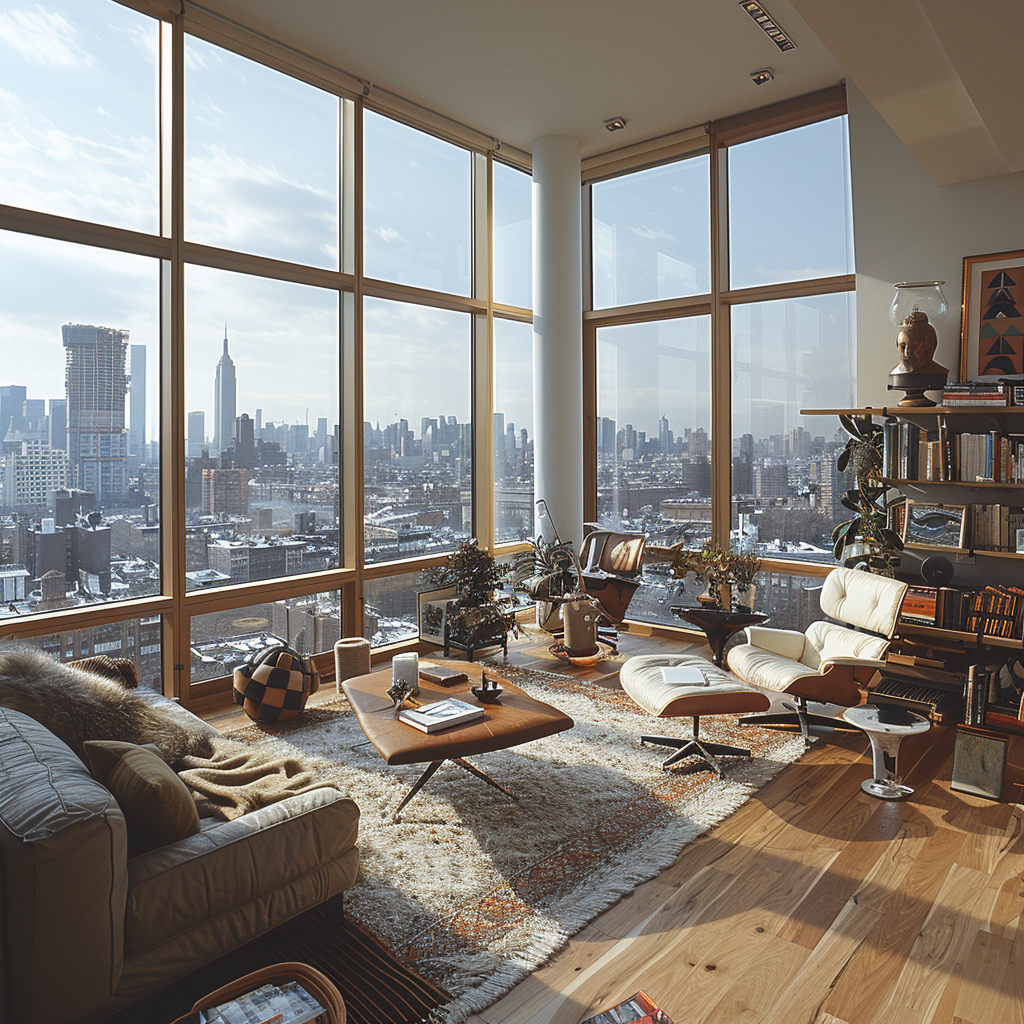
- This enhanced visualization capability provides a clear and accurate representation of how design choices—from the layout and materials to lighting and furnishings—will come together in the actual space. It empowers clients to make informed decisions, ensuring that the final product truly reflects their vision and requirements. Moreover, the ability to experiment with different designs in a virtual setting allows for a level of flexibility and creativity that was previously unattainable. Designers can easily modify elements, try out bold new concepts, or adjust layouts in response to client feedback, all without the need for costly and time-consuming physical mock-ups.
- The impact of these AI-enhanced tools extends beyond client satisfaction and creative expression. They represent a significant efficiency boost for the design process, substantially reducing the time and costs associated with design revisions. By identifying and addressing potential issues in the virtual phase, designers can streamline the project timeline and avoid the pitfalls of real-world trial and error.
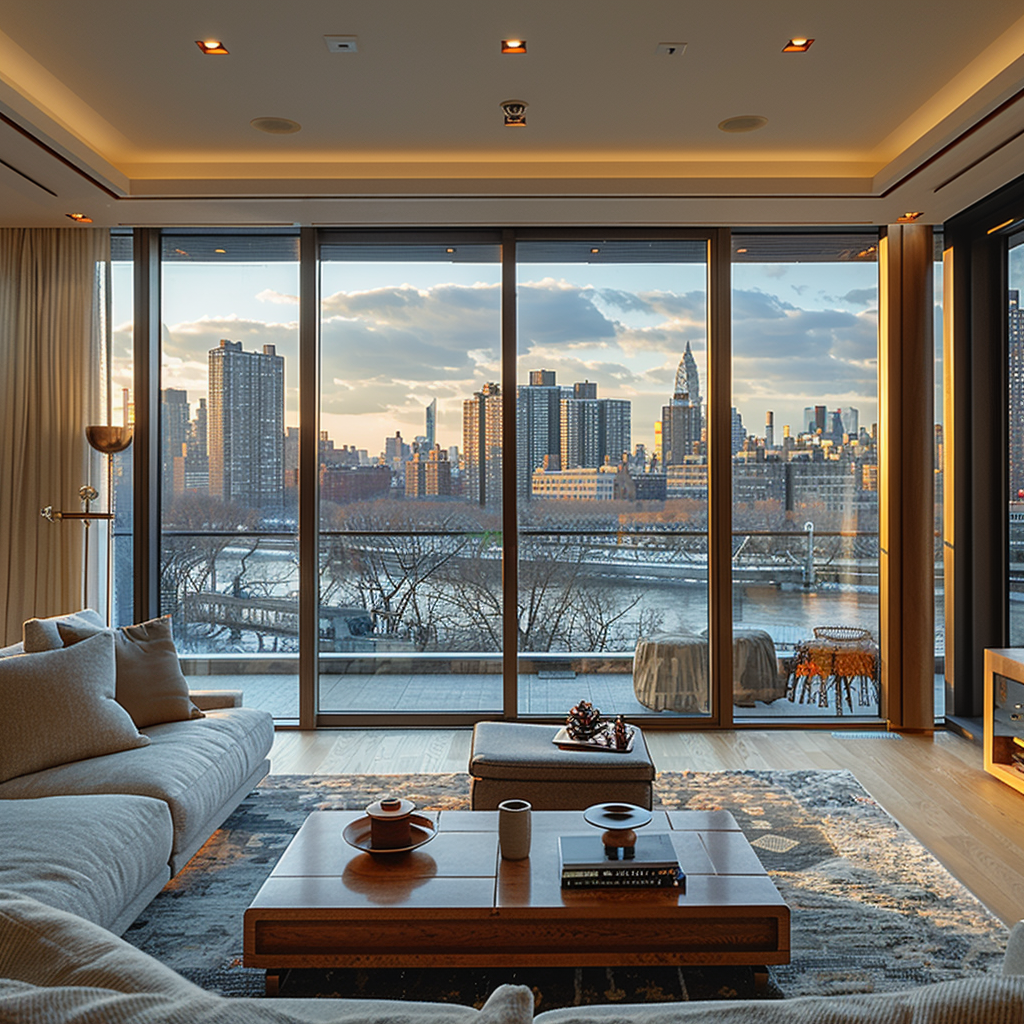
- In essence, the advent of AI-driven visualization and virtual experimentation tools marks a pivotal moment in interior design, merging the creative with the practical to achieve better outcomes. This not only enhances the design process but also promises a future where spaces are crafted with an unprecedented level of precision, creativity, and client involvement, transforming the way we conceive and realize our living environments.
Smart Space Planning and Optimization
- AI's foray into interior design is revolutionizing the concept of space planning, introducing a level of smart optimization that marries functionality with aesthetic appeal in unprecedented ways. By harnessing the power of AI to analyze critical data points – from the dimensions of a space to the intricate patterns of its use and the ergonomic needs of its occupants – designers are now equipped to devise layouts that optimize comfort, enhance flow, and promote the well-being of those who inhabit the space. This intelligent approach to space planning ensures that every aspect of a room's design, from furniture selection to lighting and storage solutions, is thoughtfully considered to make the most efficient use of available space.
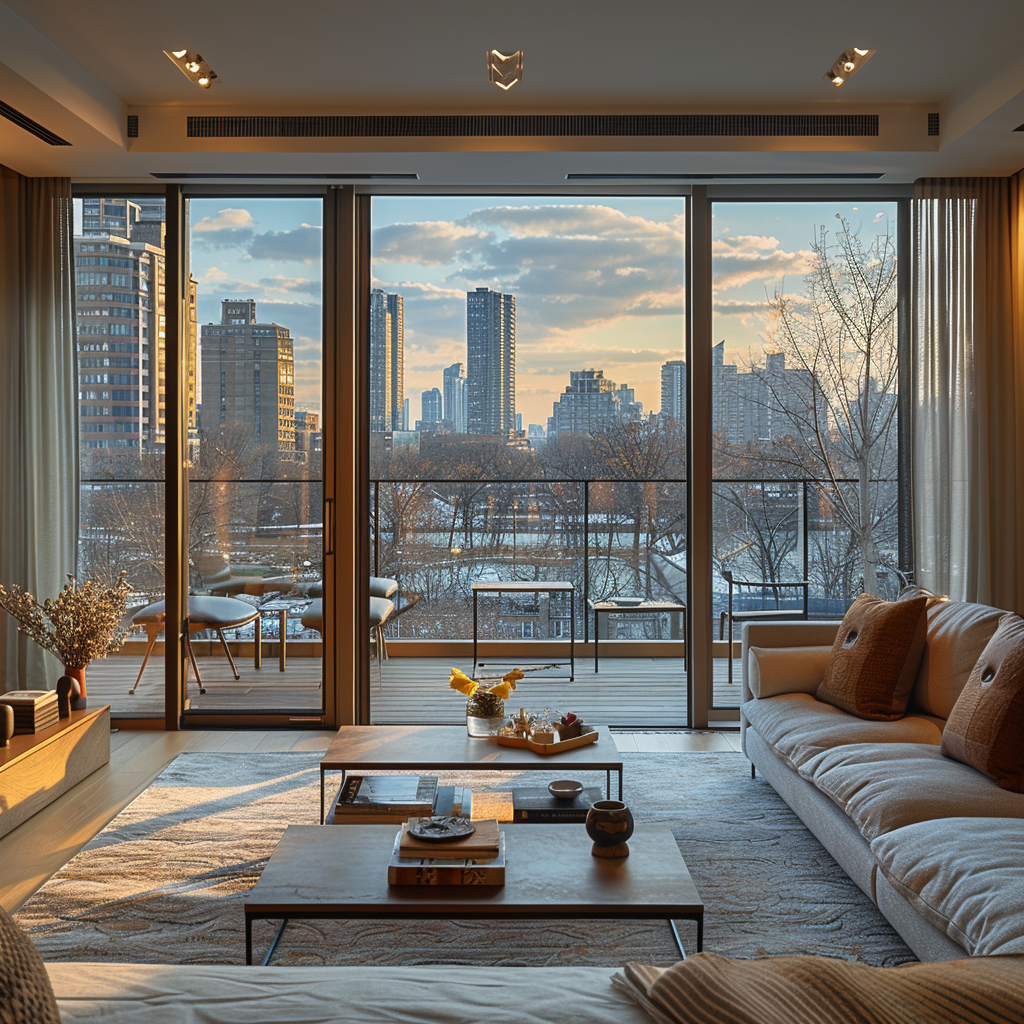
- AI-driven tools are particularly adept at suggesting furniture arrangements that not only fit the physical constraints of a room but also align with the lifestyle and preferences of its occupants. Whether it's identifying the perfect spot for a reading nook that catches the morning light or configuring a living area that facilitates easy conversation and movement, AI can unlock the full potential of any space. Similarly, in lighting design, AI can predict how different fixtures will interact with the room's natural light at various times of the day, ensuring that lighting solutions are both practical and mood-enhancing.
- Moreover, AI's contribution to smart space planning extends to storage, where it can suggest innovative solutions that keep clutter out of sight without sacrificing style or space. By analyzing usage patterns, AI can recommend storage configurations that are both accessible and aesthetically pleasing, ensuring that every item has a designated place.
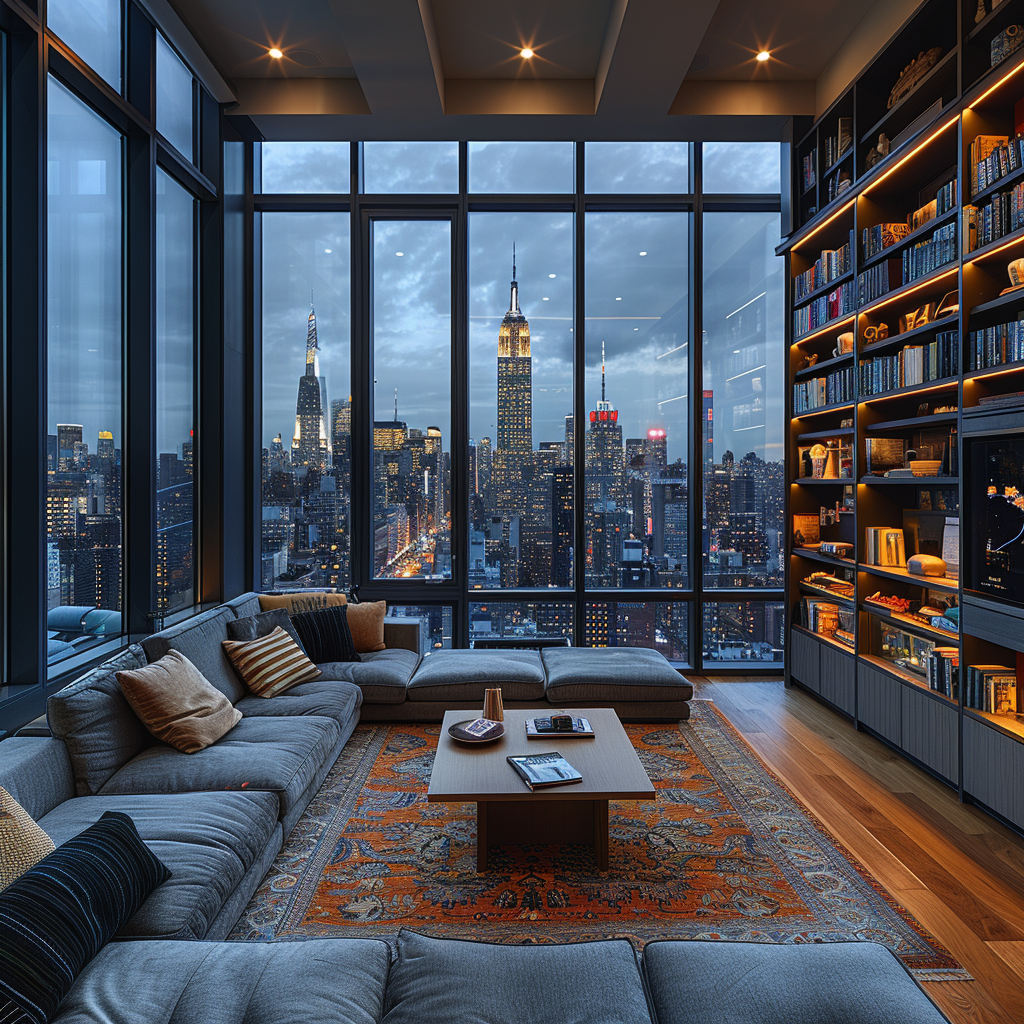
- In essence, AI is setting a new standard for space planning, one where efficiency and beauty go hand in hand. This smart optimization of interiors not only elevates the functionality of living spaces but also enhances their visual appeal, promising a future where our homes are not only more intelligent but also more intuitively aligned with our lives.
Sustainability and Eco-Friendly Design
- In the current era, where sustainability has become a paramount concern, AI is playing a pivotal role in advancing eco-friendly design practices within the interior design industry. Leveraging its capacity to analyze extensive datasets on material properties, energy consumption patterns, and overall environmental impact, AI empowers designers to make informed decisions that favor sustainability. This data-driven approach enables the selection of building materials and finishes that not only meet aesthetic and functional requirements but also minimize environmental footprints. By prioritizing materials with lower carbon emissions, recyclability, and longer lifespans, designers can contribute significantly to reducing the ecological impact of new constructions and renovations.
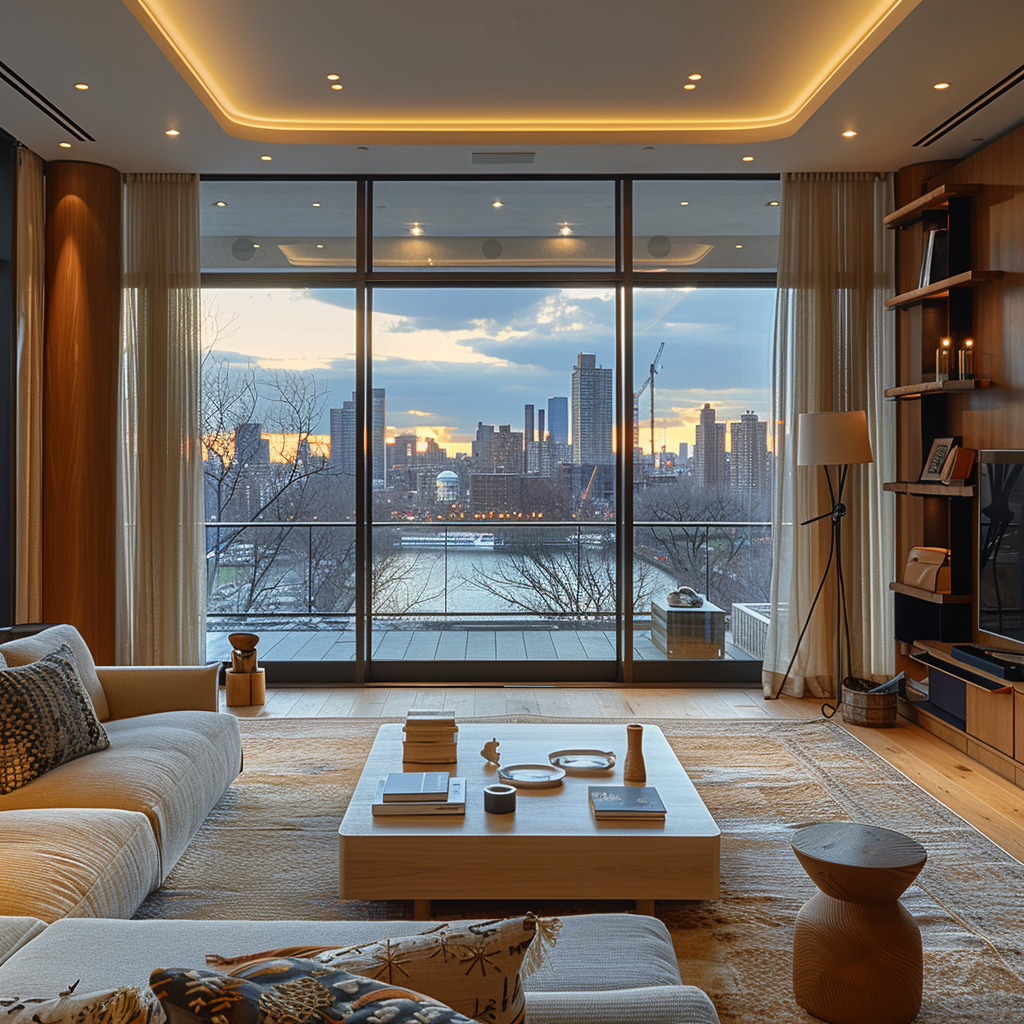
- Moreover, AI's influence extends beyond material selection into the realm of optimizing home energy efficiency. Smart home systems, powered by AI, are revolutionizing the way we consume resources within our living spaces. These intelligent systems can monitor and adjust lighting, heating, cooling, and water usage in real time, responding to the actual needs of the occupants and the environmental conditions. For instance, an AI-powered system might lower the thermostat setting when the house is unoccupied or adjust the lighting based on the natural light available, thereby conserving energy without compromising comfort.
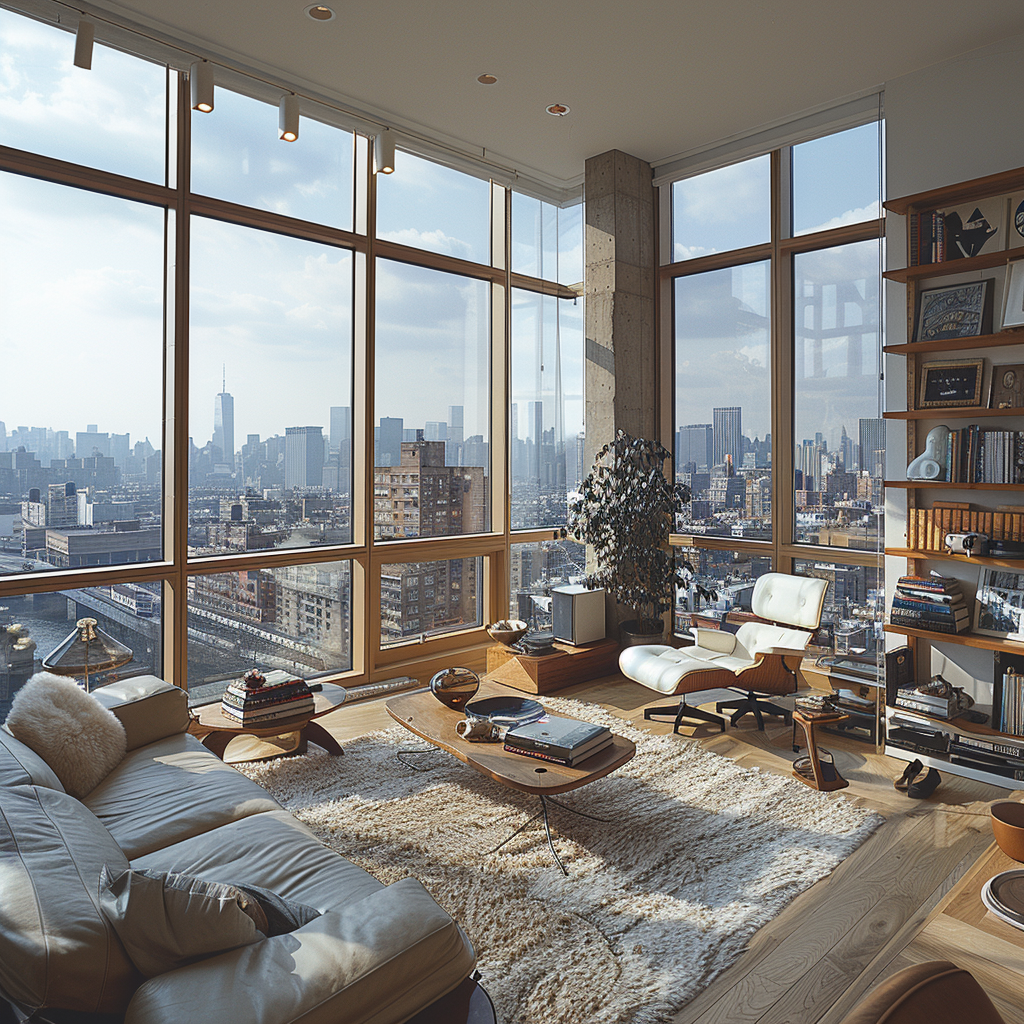
- These advancements are not just about making individual homes more sustainable; they represent a broader shift towards more environmentally responsible living. As AI continues to evolve and integrate into the field of interior design, its potential to support eco-friendly design practices grows. This opens up new possibilities for creating spaces that are not only beautiful and functional but also align with the urgent need for sustainability in our world. The future of interior design, with AI at its helm, promises homes that are smarter, greener, and more attuned to the principles of sustainable living, marking a significant step forward in our collective journey towards a more eco-conscious society.
Future-Forward: Adaptive and Responsive Environments
- The horizon of interior design is rapidly advancing towards the creation of adaptive and responsive environments, fundamentally redefining our interaction with our living spaces. At the heart of this transformation is Artificial Intelligence (AI), which, through its advanced learning capabilities, is setting the stage for homes that not only respond to our commands but also anticipate and adapt to our changing needs. This vision of the future promises living environments that are in constant dialogue with their occupants, capable of adjusting to different moods, activities, and times of the day to provide optimal comfort, inspiration, or relaxation.
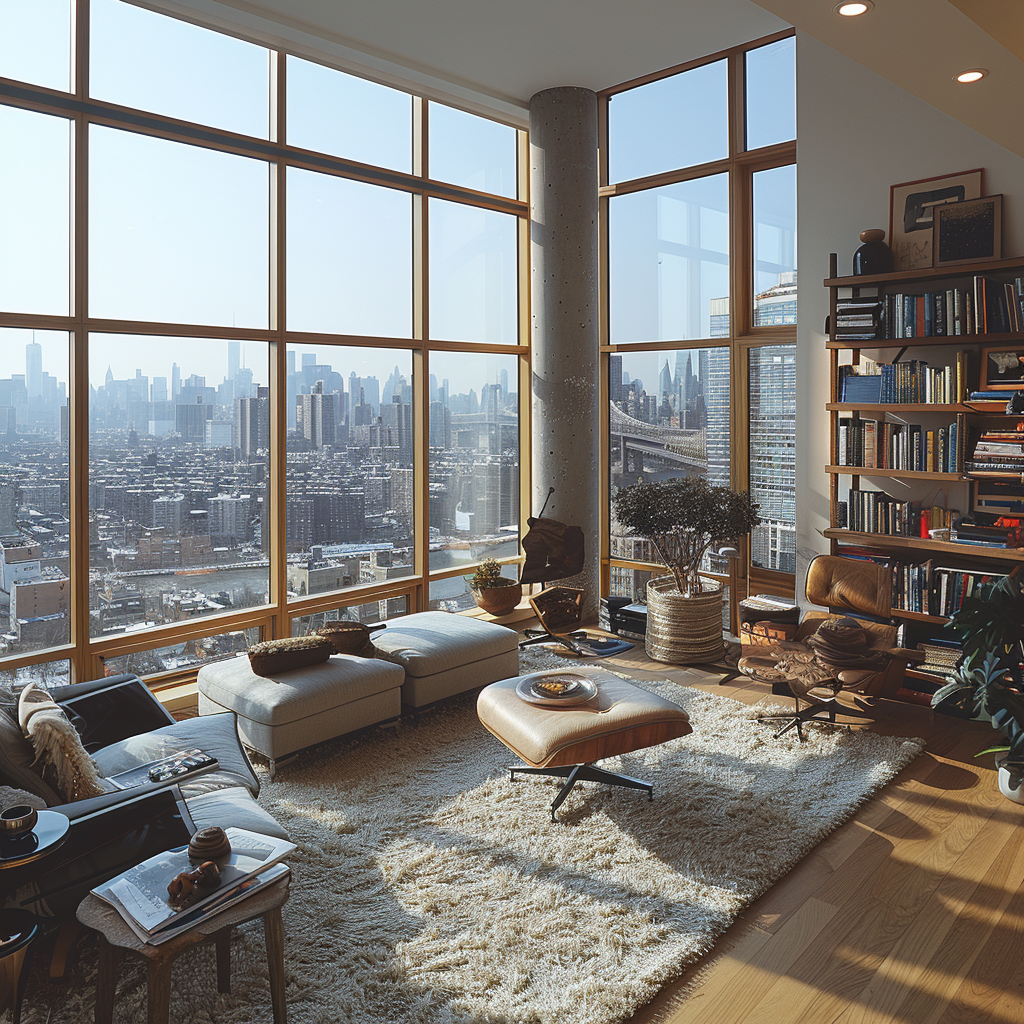
- Envision a home that intuitively knows when to let in the first light of dawn to gently wake you, adjusts the temperature for your evening relaxation, or reconfigures the lighting to foster focus or creativity. These AI-driven environments could dynamically alter their layout, ambiance, and functionality, ensuring that the space always serves the present needs of its inhabitants. From modifying acoustics to suit a quiet night in or a social gathering, to altering the hue and intensity of lighting based on the time of day or the task at hand, AI promises a level of personalization and responsiveness previously unimaginable.
- Such adaptive and responsive environments signify a leap towards truly intelligent homes where technology seamlessly integrates into the fabric of daily life, enhancing well-being and efficiency. As AI continues to evolve, these smart environments will become increasingly sophisticated, learning from our habits and preferences to create spaces that are not just places of living but partners in our daily lives.
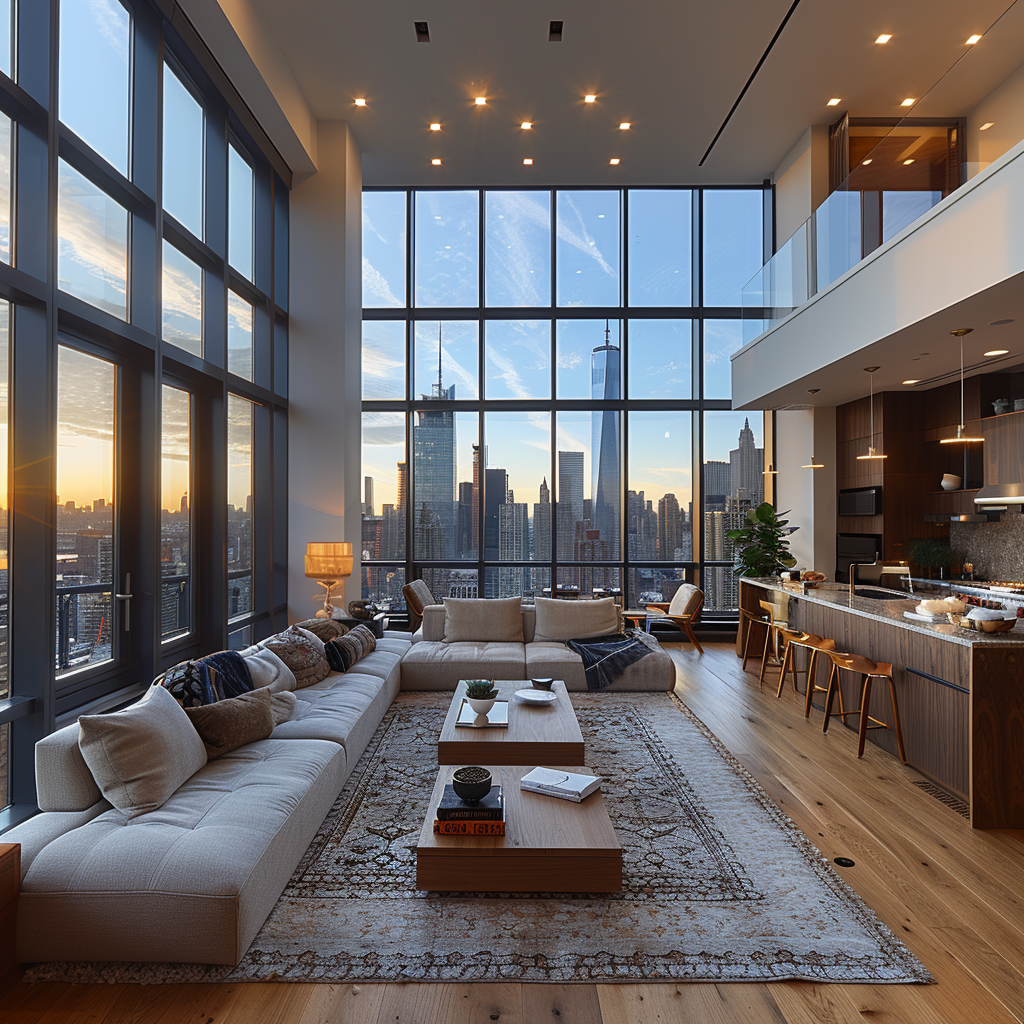
- This future-forward approach to interior design, enabled by AI, opens up exciting possibilities for how we conceive of and interact with our living spaces. It heralds a new era of design where spaces are not only aesthetically pleasing but deeply attuned to the physical, emotional, and psychological needs of their occupants, offering a glimpse into a future where our homes are as dynamic and adaptable as our lives.
Conclusion
- As we stand on the cusp of a new era in interior design, the integration of Artificial Intelligence (AI) into this creative discipline heralds a future ripe with possibilities that once seemed relegated to the realm of imagination. AI's transformative impact on interior design is profound, offering pathways to create living spaces that are not only more personalized and functional but also deeply aligned with the principles of sustainability and adaptability. This technological advancement promises to redefine the very essence of home aesthetics, marrying the timeless beauty of design with the cutting-edge precision of AI.
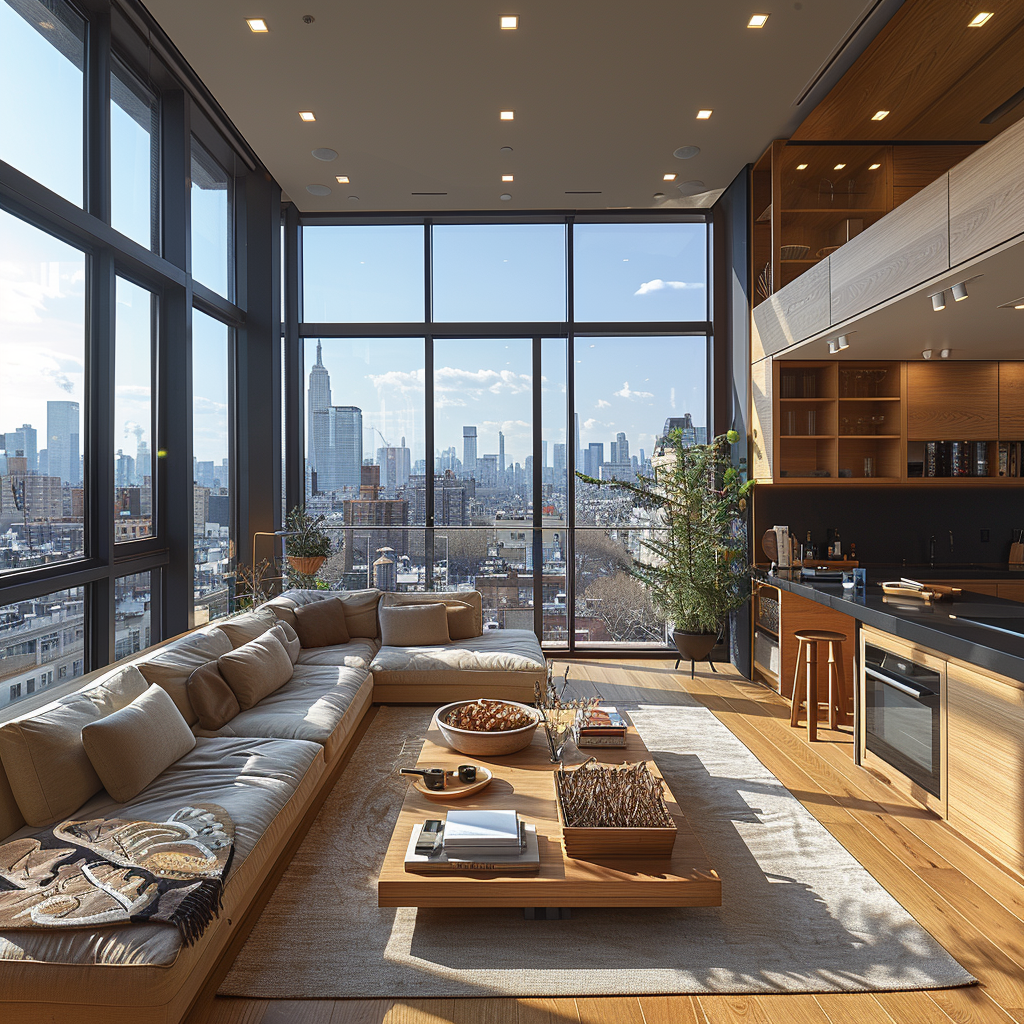
- For designers, the advent of AI opens up a new frontier of creativity, allowing them to craft spaces that truly resonate with the individuality of each homeowner. It empowers them with tools to make informed decisions on everything from space optimization to material selection, all while keeping sustainability at the forefront. Homeowners, in turn, stand to benefit from environments that are tailored to their life’s rhythms and preferences, offering enhanced comfort, efficiency, and a deeper connection to their surroundings.
- The promise of AI in interior design extends beyond mere aesthetic enhancements, venturing into the realm of creating smart, adaptive environments that respond to and evolve with their occupants. This seamless integration of technology and design not only elevates the functionality of our living spaces but also enriches our interaction with them, making homes more attuned to our needs and aspirations.

- As we look to the future, the potential of AI in interior design is limitless, promising a synthesis of art, technology, and innovation that will transform our living spaces. This future vision of interior design is not just about spaces that are more aesthetically pleasing but about creating environments that are smarter, more responsive, and intricately woven into the fabric of our daily lives. For designers, homeowners, and technology enthusiasts alike, the journey ahead is filled with excitement and anticipation, as we explore the boundless possibilities that AI brings to the world of interior design.